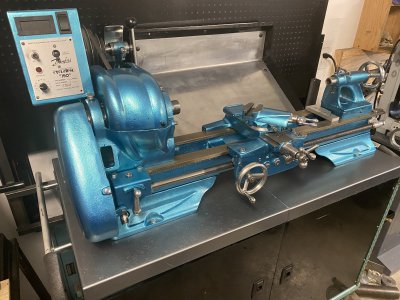I made the plumb bob setup shown in the first video. About 2 ft tall. Worked pretty good. Used a Starrett 98-6 for a final check and I didn't change it. When I posted it, I was told it was a waste of time. There are people here who have used a carpenters level on their lathe and it worked. As stated above, level isn't all that important, but twist is. What ever method you use the level must look the same in all directions and locations. Different places along the bed and diagonals. I also noticed that when I placed my hand on the bed, the level read different. I said placed, not leaned on it. Several people said that was normal even for heavy cast iron lathes, let alone a 500 lb hobby lathe. Don't know about that. Later this year I'm going to redesign the whole lathe bench and see if it goes away. The headstock could be out of alignment, but it could also be the jaws in the chuck. They hold different diameters differently, crooked if you prefer, due to the deflection of the jaws and the body. lots and lots of posts on reboring the jaw faces to true them up. And the more you tighten them, the more they deflect. Think the last one I saw on this was ROBRENZ.
As has been reported a zillon times, a lathe on a rolling, pitching ship doesn't stay level. The way it is bolted to the deck eliminates the warping and twist of the bed.
As has been reported a zillon times, a lathe on a rolling, pitching ship doesn't stay level. The way it is bolted to the deck eliminates the warping and twist of the bed.


